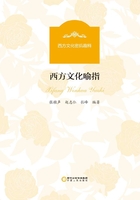
41.白领与蓝领
[词语]white-collar and blue-collar
[含义]非体力劳动者与工人;工薪阶层
[趣释]【物事喻指】衣领是衣服不可分割的部分。随着现代工商业的发展,职业分工越来越精细,人们逐渐开始用“颜色”(colour)“衣领”(collar)的形式来喻指社会中的一类人。“白领”(white-collar)早在1928年就被用来喻指非体力劳动者。他的职业要求比较整洁的服饰,不必与污秽臭汗打交道,身着白色的衣领,如教师、公务员、办公室职员等;“蓝领”(blue-collar)被用来喻指靠双手劳动谋生的工人,因为工作环境要求他们穿着深色的衣服上班;“灰领”(gray/grey collar)源于美国,喻指负责维修电器、上下水道、机械方面的技术工人;“粉领”(pink-collar)最早见于美国的《时代周刊》(Time),喻指教育、文书、售货等行业的女雇员。因为“粉红”(pink)在西方传统上代表女性,女性在这些行业中占有较高的比例。
[运用]The white-collar workers earn more than the blue-colour workers do. 白领工人比蓝领工人挣得多。
Simple and unaffected house decoration suits the taste of white and blue collar workers. 简单质朴的居室装潢适合工薪阶层口味。
In 1979 and again in 1980, we had to lay off thousands of workers, blue-collar and white-collar alike.在1979年,后来又在1980年,我们不得不辞掉数以千计的工作人员,其中有蓝领的,也有白领的。
The coming of intellectual economy age has aroused unprecedented attention to training highly-professional blue-collar and grey-collar employees. 知识经济时代的到来,使高级蓝领和灰领人才的培养受到了空前的关注。
After graduation from college, she underwent several setbacks and finally decided to be a pink-collar worker.大学毕业后,她几经周折最终决定成了一名粉领。